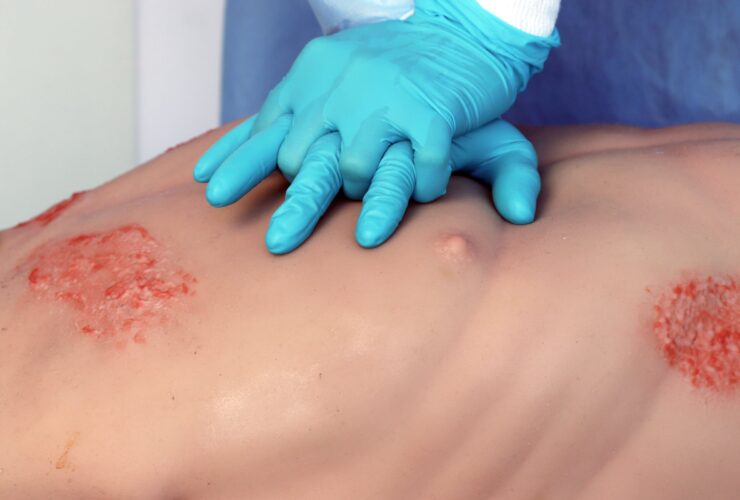From the classroom to the clinic: the benefits of scenario-based training
The famous French microbiologist and chemist Louis Pasteur once said, “Fortune favors the prepared mind.” While it’s a quote that holds in all walks of life, from academics to sports, it seems entirely fitting that it came from someone active in the medical field. Few professions demand preparation like healthcare, nor are the consequences of success and failure quite so high.
“Fortune favors the prepared mind.”
Louis Pasteur
For doctors, nurses, paramedics, and armed forces, being prepared in the emergency room, the pediatric ward or out in the field can be a matter of life and death.
High-quality training is critical for delivering the very best training, but theoretical classroom and textbook-based training simply doesn’t cut the mustard. There’s another famous quote often attributed to the US Navy Seals: “Under pressure, you don’t rise to the occasion, you sink to the level of your training. That’s why we train so hard.”
It’s the perfect explanation for why realistic, scenario-based simulation is a must. Hands-on, collaborative scenario-based training ensures that all medical employees are familiar and comfortable enough with a vast range of clinical situations so that, when the chips are down, they perform according to the best of their knowledge and expertise.
A day in the EMR team
A paramedic responds to an emergency call for a baby that is critically ill. By the time they arrive, the baby has fallen into cardiac arrest. The paramedic attempts an IV, but it doesn’t work. They try again, same result. It’s time for an intraosseous (IO) insertion to ensure the baby receives the fluids and drugs needed to save its life.
The next call is to an adult who has fallen. The patient is losing blood, they’re sweating and their vital signs are unstable. A thoracostomy is required before taking the patient to the hospital for surgical intervention.
Both these situations are unpredictable, demanding, and require quality hard and soft skills training, but they’re not uncommon. Preparing healthcare practitioners for just these occasions is the driving principle behind our cutting-edge simulators. Using innovative technologies, our manikins realistically simulate a broad range of diagnosis and treatment scenarios. Tutors can also alter scenarios in real-time to test users’ ability to adapt and respond when a patient’s condition suddenly and unexpectedly deteriorates.
Take control of your scenario training
Our software comes with common scenarios already loaded, but tutors can manipulate motor functions, breathing rate and depth, and vital signs through our editing software. They can make the simulators’ skin colorize, give them a precise coughing sound, and even have them bleed, sweat, or urinate. These factors can be preloaded to create new and specific scenarios, or tutors can alter any one of these factors in real-time to reflect the specifics of their environment— such as whether they’re a first-responder, work in a hospital, or are a member of the military— and to see how their trainees adapt.
Time and time again, realistic, hands-on scenario-based training has been proven to be a critical tool for improving patient outcomes. Knowing how to act, react, interact, diagnose and treat efficiently and calmly saves lives and can only be trained and retrained through familiarity with scenarios in a safe environment. After all, fortune favors the prepared mind!
Below is a complete list of scenarios simulated by Medical-X manikins.
Discover our scenarios

ADAM-X
Adult patient simulatorAllergic Reaction – Anaphylaxis
Caffeine Overdose
Cardiac Arrest – Ventricular Fibrillation
Difficult Airway
Heroin Overdose
Out-of-Hospital Unstable Bradycardia
Pneumothorax
Sinus Tachycardia – Asthma Exacerbation
Snake Bite
Stable Tachycardia – Atrial Flutter
Unstable Bradycardia
Unstable Tachycardia – Atrial Fibrillation
Unstable Tachycardia – Ventricular Tachycardia
Ventricular Tachycardia with ICD
Unstable Tachycardia
All scenarios are in accordance with the latest guidelines of the American Heart Association.

NENASim
Infant patient simulatorAnaphylactic Shock
Bronchospasm
Epiglottitis
Polytrauma
Meningitis
Adrenal Insufficiency
Benzodiazepine Poisoning
Cardiogenic Shock
Heat Illness – Hyperthermia
Iron Poisoning
Bradycardia
Abusive Head Trauma
Septic Shock
Acute Airway Obstruction
Supraventricular Tachycardia
Comments are closed.





Permalink
Permalink
Permalink
Permalink